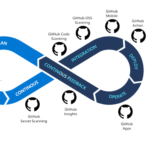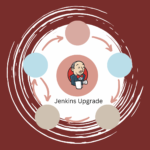Artificial Intelligence (AI) and Machine Learning (ML) projects are increasingly adopting Retrieval-Augmented Generation (RAG) to deliver contextually rich, accurate responses by combining pretrained language models with external knowledge retrieval. When building full-stack RAG applications-with ReactJS frontends and robust backend services-implementing effective CI/CD and DevOps practices is essential to ensure scalability, maintainability, and continuous improvement.
This guide walks you through the entire process of structuring your project, embedding data, training models, storing artifacts, and automating workflows using GitHub and its ecosystem. We also cover practical GitHub Actions examples to help you automate testing, embedding generation, and deployment.
Understanding the Foundations: CI/CD, DevOps, and RAG
Continuous Integration and Continuous Delivery (CI/CD)
CI/CD automates the process of integrating code changes, running tests, and deploying applications rapidly and reliably. In AI/ML projects, CI/CD pipelines extend to data processing, model training, embedding generation, and deployment of both backend and frontend components.
DevOps and MLOps
DevOps promotes collaboration between development and operations teams with a focus on automation and monitoring. MLOps applies these principles specifically to AI workflows, addressing challenges such as data versioning, experiment tracking, model deployment, and lifecycle management.
Retrieval-Augmented Generation (RAG)
RAG architectures combine large language models (LLMs) with an external retrieval system-typically a vector database storing embeddings-to dynamically fetch relevant context during inference. This approach enhances the accuracy and relevance of generated responses by grounding them in up-to-date, domain-specific knowledge.
Why Use GitHub and Related Tools for RAG Projects?
- GitHub Actions: Automate your CI/CD pipelines for code testing, embedding generation, and deployment.
- Version Control: Manage source code, notebooks, and small datasets with Git; use DVC or Git LFS to version large datasets and embeddings.
- Experiment Tracking: Tools like MLflow or Weights & Biases help track model training runs and parameters.
- Vector Databases: ChromaDB, Pinecone, or FAISS enable efficient storage and querying of embeddings.
- Collaboration: GitHub’s pull requests, code reviews, and issue tracking facilitate teamwork across data scientists, backend engineers, and frontend developers.
Recommended Directory Structure for Your RAG Project
Organizing your repository clearly is crucial for maintainability and smooth CI/CD automation. Here is a recommended directory structure:
/
├── backend/
│ ├── app/
│ │ ├── api/ # REST or GraphQL API endpoints
│ │ ├── embeddings.py # Embedding generation scripts
│ │ ├── models.py # ML model loading and inference
│ │ ├── database.py # Vector DB client and management
│ │ └── main.py # FastAPI or backend server entry point
│ ├── scripts/
│ │ └── generate_embeddings.py # Standalone embedding script
│ ├── tests/ # Backend unit and integration tests
│ ├── requirements.txt # Python dependencies
│ └── Dockerfile # Container definition for backend
├── frontend/
│ ├── public/ # Static assets
│ ├── src/
│ │ ├── components/ # React components
│ │ ├── services/ # API service calls
│ │ ├── App.js # Main React app
│ │ └── index.js # React entry point
│ ├── tests/ # Frontend tests
│ ├── package.json # Node dependencies and scripts
│ └── Dockerfile # Container definition for frontend
├── data/
│ ├── raw/ # Raw documents (PDFs, text files)
│ ├── processed/ # Cleaned and chunked data
│ └── README.md # Data description and usage
├── embeddings/
│ ├── vectors/ # Serialized embeddings or snapshots
│ └── README.md # Embedding generation info
├── models/
│ ├── trained/ # Saved model weights and configs
│ └── README.md # Model details and training logs
├── .github/
│ └── workflows/
│ └── ci-cd-rag.yml # GitHub Actions workflow file
├── README.md # Project overview and instructions
└── .gitignore
Embedding Data: How It Works
Embeddings convert textual data into dense numerical vectors that capture semantic meaning, enabling similarity search in vector databases.
Step 1: Data Preparation
- Collect raw documents (PDFs, web pages, etc.) in
data/raw/. - Preprocess and split documents into smaller chunks (e.g., paragraphs) stored in
data/processed/.
Step 2: Generate Embeddings
- Use pretrained embedding models like
sentence-transformers/all-MiniLM-L6-v2or OpenAI embeddings. - Example Python snippet (
backend/scripts/generate_embeddings.py):
from sentence_transformers import SentenceTransformer
import os
import json
model = SentenceTransformer('all-MiniLM-L6-v2')
def load_chunks(path):
with open(path, 'r') as f:
return json.load(f)
def save_embeddings(embeddings, path):
with open(path, 'w') as f:
json.dump(embeddings, f)
if __name__ == '__main__':
chunks = load_chunks('data/processed/chunks.json')
embeddings = model.encode(chunks).tolist()
save_embeddings(embeddings, 'embeddings/vectors/embeddings.json')
Step 3: Store Embeddings in Vector Database
- Load embeddings into vector DB like ChromaDB for fast similarity search.
- Maintain metadata for traceability (source document, chunk ID).
- Version embeddings using DVC or snapshot exports.
Training and Using Models in Python
Data Processing and Model Training
- Use
pandas,numpy,nltk, orspaCyfor data cleaning and feature extraction. - Train or fine-tune ML models using
scikit-learn,TensorFlow, orPyTorch. - Track experiments with MLflow or Weights & Biases for reproducibility.
Saving Models and Artifacts
- Save model weights and configurations in
models/trained/. - Store tokenizer and preprocessing objects alongside models.
- Use MLflow model registry or cloud storage for deployment readiness.
Inference and Integration
- Load models in backend API (
backend/app/models.py) for serving predictions. - Integrate retrieval results with LLMs (e.g., OpenAI GPT) to generate responses.
Example GitHub Actions Workflow for RAG Project
This sample workflow automates linting, testing, embedding generation, and deployment for backend and frontend:
name: CI_CD_RAG_Project
on:
push:
branches: [ main ]
pull_request:
branches: [ main ]
jobs:
lint-and-test:
runs-on: ubuntu-latest
steps:
- uses: actions/checkout@v3
- name: Setup Python
uses: actions/setup-python@v4
with:
python-version: '3.9'
- name: Install backend dependencies
run: pip install -r backend/requirements.txt
- name: Run backend tests
run: pytest backend/tests/
- name: Setup Node.js
uses: actions/setup-node@v3
with:
node-version: '16'
- name: Install frontend dependencies
run: npm install --prefix frontend
- name: Run frontend lint
run: npm run lint --prefix frontend
generate-embeddings:
needs: lint-and-test
runs-on: ubuntu-latest
steps:
- uses: actions/checkout@v3
- name: Setup Python
uses: actions/setup-python@v4
with:
python-version: '3.9'
- name: Install backend dependencies
run: pip install -r backend/requirements.txt
- name: Generate embeddings
env:
OPENAI_API_KEY: ${{ secrets.OPENAI_API_KEY }}
run: python backend/scripts/generate_embeddings.py
deploy:
needs: generate-embeddings
runs-on: ubuntu-latest
steps:
- uses: actions/checkout@v3
- name: Deploy backend
run: |
ssh user@your-server "cd /app/backend && git pull && docker-compose up -d --build backend"
- name: Deploy frontend
run: |
npm run build --prefix frontend
rsync -avz frontend/build/ user@your-server:/var/www/html/
Monitoring and Maintenance
- Monitor API response times, error rates, and embedding update statuses.
- Track model performance and retrieval quality metrics with MLflow or Weights & Biases.
- Set up alerts for embedding drift or degradation in model accuracy.
- Use centralized logging and tracing for debugging and audit trails.
Real-World Example: RAG with ReactJS Frontend and FastAPI Backend
A practical example uses FastAPI as the backend API server and ReactJS for the frontend UI. ChromaDB manages vector embeddings, while OpenAI GPT powers the language model inference. Users upload documents which are chunked, embedded, and indexed. Queries from the React app retrieve relevant chunks and generate AI-powered answers with citations.
Explore the source code and deployment instructions here: GenerativeAI RAG Application
Watch the video walkthrough: Building a RAG API and React Native Frontend
Emerging Trends in RAG and AI/ML DevOps
- Unified MLOps Platforms: End-to-end platforms integrating code, data, embeddings, and deployment pipelines.
- Low-Code/No-Code RAG Builders: Tools like LangChain and LangServe simplify RAG app creation.
- Real-Time Interaction: WebSocket and Server-Sent Events enable streaming AI responses.
- Hybrid Cloud and Edge Deployments: Deploy retrieval and generation components closer to users for low latency.
Conclusion
Retrieval-Augmented Generation adds powerful capabilities to AI/ML projects but introduces complexity that requires robust DevOps and CI/CD workflows. Using GitHub Actions for automation, DVC for versioning, vector databases like ChromaDB for embeddings, and ReactJS for frontend development enables teams to build scalable, maintainable, and efficient full-stack RAG systems.
Automating data ingestion, embedding updates, model inference, and frontend deployment ensures your AI applications stay accurate, responsive, and continuously improving.
Further Reading and References
- Vector Embeddings in RAG Applications - Weights & Biases
- Develop a RAG Solution - Microsoft Azure
- Retrieval Augmented Generation with Vector Databases - ObjectBox
- ChromaDB Official Site
- GenerativeAI RAG Project (FastAPI + React)
- MLflow Documentation
- Weights & Biases
Ready to take your AI/ML software quality to the next level?
Optimize your DevOps pipeline, or need expert guidance, we are here to help. Contact us today to discuss your project and discover how we can drive measurable improvements together.
Get in Touch


